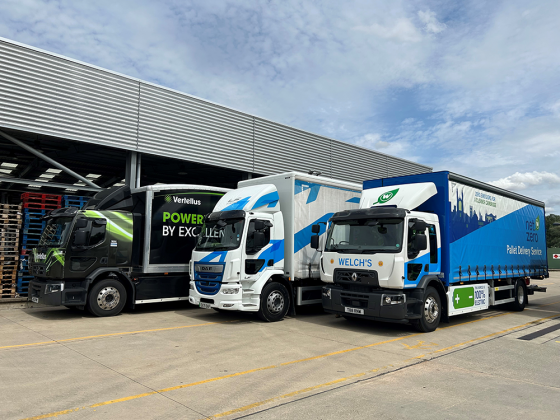GreenFleet EV Roundtable

People widely overestimate how much they drive on a daily basis. This, as well as issues with charging, are two of the biggest barriers to widespread electric vehicle adoption, according to delegates at GreenFleet’s EV roundtable discussion, which took place at London’s iconic Tower Bridge on 15 September
People need a better understanding of their driving habits and what they need a car to actually do, believes Ben Wicks from Go Ultra Low, a government-industry campaign that promotes electric vehicles. He said: “Research has found that the average daily commute is less than 10 miles. If an electric vehicle can do around 170 miles in the real world, that is a lot of distance before needing to recharge, and more than capable of doing the average daily commute.”
Chris Chandler, principal consultant from Lex Autolease echoed this thought, saying that people use that “special occasion” to justify not buying an electric car, such as driving to France once a year. He said: “You need to start off with your usual driving requirements, then you think about the exceptions, without basing your decision on them.”
Challenges surrounding electric vehicles
Ben and Chris were joined by Matthew Morgan from EV charging infrastructure specialists the Phoenix Works, and fleet operators from Leeds City Council, London Ambulance Service, Jersey Post, Gnewt Cargo, and Babcock International. The roundtable opened up discussions about the challenges surrounding electric vehicles and allowed delegates to share experiences and gain advice. The event was chaired by John Curtis, a motoring journalist who headed up the Scottish Government’s approach to policy for low carbon vehicles and transport.
Ben continued to explain why charging – or people’s perception of charging – is a major barrier. He said: “People think they need to charge an electric vehicle every single day. But you don’t go to the petrol station every single day, so why do you need to charge your car every single day? Again, it’s down to understanding driving habits.”
“The best way to get people to open their minds to electric vehicles is to get them to try them,” Ben continued. “There remains a public perception that EVs are like milk floats and it’s a really hard barrier to get past. When you get people in these cars, they get a big smile on their face. Yes you don’t get the revving petrol engine, but you’ve got to move with the times and look at how technology is going to improve our lives.”
Public charging infrastructure
The public infrastructure was raised for discussion at the event. There are around 7,493 charging devices in the UK, according to Zap Map and this number needs to grow in order to make public charging more practical. There are also issues with the interoperability of the different charge points, and the fact that a charge point may be occupied when you need it.
Given these limitations, the question was raised as to whether fleets need to rely on the public charging infrastructure, or if they get by with work and home charging.
Chris Rutherford, fleet commercial manager at London Ambulance Service NHS Trust said the organisation would not be reliant on public charging, unless it was just for opportunity charging. “Even if it’s just our support fleet rather than frontline,” explains Chris, “if a general station manager needs to do GP or hospital visits and all the local public chargers are being used, then that person is going to be stuck and the vehicle becomes useless.”
Chris from Lex Autolease said: “We advise fleets that if they have got a charger at home and at work, that is what you should be reliant on. Using the public infrastructure is not a problem if it is only occasional, but if you are reliant on it, it can become a barrier by stopping you from doing your work. That is when you get the nightmare stories about running out of charge and charge bays being occupied. And it’s these stories that spread 50 times quicker than if an electric journey went well.”
Ashley Grainger, project manager from Gnewt Cargo, an all-electric last mile delivery firm in London, explained that their vans do on average six or seven miles a day, so they don’t need a full charge every time. The firm has therefore recently invested in smart chargers from the Phoenix Works which will stagger demand and schedule charges.
Darren Moon, operations manager at Jersey Post explains that drivers of their electric vans are eager to take the vehicles home and are therefore happy to charge at home and pay for it. The firm also has wall chargers in the company car park which benefits from discounted overnight electricity.
Interoperability
Not only is there a limited public coverage of charging bays, they also need to be interoperable so that drivers can use any charge point without having to register first.
John Curtis asked the question of whether fleets can use their collective power and influence to put pressure on the government to make public charging a “national resource” with one card for charging on any network in any part of the country.
Andrew Hickford from Leeds City Council echoed this thought, asking why contactless payment technologies could not be put in place so that you can pay for charging at any device, with the money going to the appropriate provider.
Matthew Morgan explained that private investment was encouraged in this market in the early days, and for these companies to make it work, they needed a return on investment, hence the plethora of different networks, devices, and tariffs. “Contactless credit card readers involve expensive hardware costs, transaction costs and merchant bank costs,” Matthew added.
Lex’s Chris said that while different providers competing for a part of the market is understandable, there should have been some central guidance in place stating that charge providers had to “comply with a certain format or billing system”.
The issue of interoperability was included in the Automated and Electric Vehicles Bill, and new laws addressing such issues should come into place within two years.
Ben Wicks explains what this means: “The bill should address some of the issues we’ve been talking about. It gives the government power to legislate charging companies to have an open system so that you have one card that works with any system, whether it be a contactless credit card or one membership card.”
For those that live in urban areas with no possibility of home charging, there are additional challenges to owning an electric vehicle and reliance on a good public charging network is crucial.
Chris from Lex Autolease pointed out that it was predicted that urban areas, such as London, would be a big market for EVs. But in actual fact, it’s places like Scotland where there are favourable incentives for EVs, or Milton Keynes, which has a good charging infrastructure, where the market has really taken off.
‘Ending’ petrol and diesel
In July 2017, the government announced as part of its air quality plans that it would end the sale of all new conventional petrol and diesel cars and vans by 2040.
At the time, there was lot of misinformation about what this meant. It did not mean that petrol and diesel would disappear. The key word in the announcement was ‘conventional’ and what it meant was that all new cars from 2040 will have an element of electrification – either full electric, hybrid or will be run on another type of greener fuel. So for those using hybrids, the use of petrol and diesel will continue, as it will for larger commercial vehicles and HGVs where electrification is not viable.
Ben Wicks said: “There was a lot of misrepresentation when the announcement came out, saying we were going to ban petrol and diesel from the roads. This is not true, we will be ending the sale of new traditional petrol and diesel cars.”
Ben believes that many of us will be driving a hybrid in the future and if technology advances to a stage when EV batteries can do over 300 miles, then a greater proportion of us will be in pure EVs.
However “there will still be a need for petrol and diesel as part of the overall car park”, Ben says.
Residual values
The topic of residual values was raised during the roundtable. Michael Cook from Babcock International Group, a company that provides engineering support for the emergency services, said that while the company has an appetite for electric vehicles, they don’t have the confidence in their residual values. For a company that purchases its vehicles outright, this is a big factor.
It is battery degradation that causes residual values in electric vehicles to be low. But there is inherent value in an electric car because of its battery, and this will result in residual values increasing for EVs, according to Matthew Morgan. He said: “There are companies that are buying second life EV batteries and using them as battery storage. I know a company that bought several thousand batteries from a manufacturer before they even had been made and put in a car yet.”
Chris Chandler added that: “It is still early days for the EV market and with residuals. As a leasing company we know that because we take out the residual value risk. But the more we are learning, the more positive we can be about residuals.”
The electric vehicle roundtable discussion also covered the issue of grid overload, renewable energy, and how electric vehicles can work even without subsidies and grants. These topics will be covered in the next three issues of GreenFleet.






